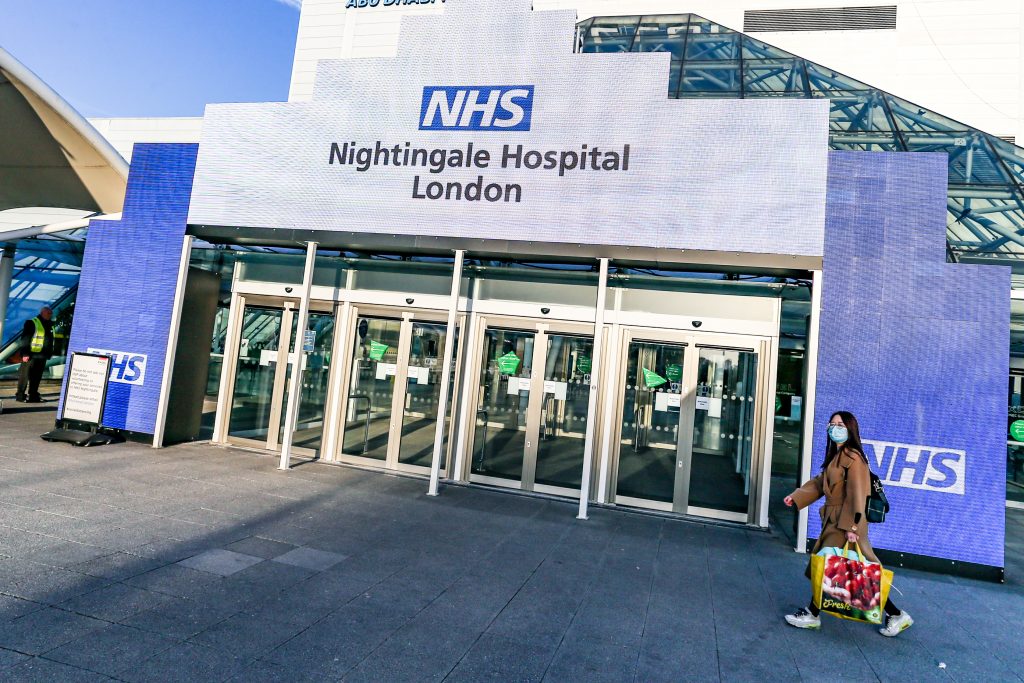John Lister –
In the late 18th century Russian prince Grigori Potemkin is alleged in popular myth to have built impressive fake villages along the route to be travelled by Empress Catherine the Great, to give the illusion of prosperity.
In the early 21st century, NHS England has taken a leaf out of Potemkin’s book, by commandeering a vast exhibition and conference centre, and with logistical help from the army created the appearance of a huge “new hospital” more than four times the size of most normal general hospitals.
It has made some good headlines, and has actually been compared with the massive Chinese effort in Wuhan, which involved clearing land and building a vast prefabricated hospital from scratch in just ten days: but reconfiguring a large pre-existing building comprised mostly of open space is not really in the same league, and questions are now being asked about how wise it was to do this, and whether the building has proved to be an asset or a liability.
Not least because just as the villages were hollow facades, the hospital turns out to be lacking two key ingredients for success – staff, and patients.
Indeed while it appears that the hospital has been speedily equipped with 500 brand new beds and even hard-to-find ventilator machines, it has a desperate shortage of staff with the intensive care expertise to use the ventilators, and patients to use them on. Just one 42-bed ward is actually being used.
Admission criteria for the hospital leaked to the HSJ and shared on Twitter by the Independent’s Shaun Lintern appear to exclude all of the most serious levels of illness that might require ventilator treatment (“any patient scoring above five on the clinical frailty scale”):
“The exclusion criteria say any patient with significant complications or serious intensive care needs such as renal replacement therapy, or filtering blood in place of the kidneys, are automatically not eligible to be taken there, leaving many of the sickest patients with London hospitals.”
More recent accounts suggest it is designed more as a step-down facility for patients who have come through ICU rather than as a front-line treatment centre. As Lintern points out it is a “field hospital” and:
“The Nightingale, in line with many makeshift ICUs across the country, is also using anaesthetic ventilators with only a small number of normal intensive care ventilators.”
The equivalents in Birmingham and Manchester are explicitly aimed at receiving less serious step-down patients, while as soon as it opened it was announced that the Yorkshire Nightingale, in Harrogate, would be kept empty while existing hospitals continue to cope.
And as stories revealing the minimal numbers of patients being treated at the giant ondon “Nightingale” hospital break into the mainstream media, it appears from reports f to the Lowdown rom worried staff in other trusts that NHS England bosses are stepping up the pressure on hospitak chief executives across London and the south east to dispatch staff to boost the numbers on hand at the Nightingale, and also to send patients to use more than a couple of dozen of the boasted potential total of up to 4,000 beds.
A detailed Independent report underlines the problem: the hospital has too few patients to justify its existence, but also too few staff to take any more, and more could only come by piling more pressure on hospitals that are just about coping so far to cope with fewer staff. It quotes one member of staff at the Nightingale:
“Our goal is to relieve the pressure on London and if we had the staff, we would be more than happy to take more patients. The only rate-limiting step is staffing.”
Of course on one level the fact that the huge additional number of beds have not been required, and NHS trusts in the capital and surrounding area have managed to cope with the Covid-19 crisis so far by cancelling almost all elective work, emptying beds of patients and revamping operating theatres as makeshift ICUs is a good thing. It also makes sense for the NHS to reserve some spare capacity to treat a potential second wave of covid-19 infections as the current lockdown begins to unwind.
But whether it was sensible to virtually close down all other treatment in hospitals, including cancer surgery – leading to record low occupancy levels (averaging 41% across England compared with a pre-covid level averaging over 90%, and down to 72% even in the hardest-pressed London area) – alongside the creation such large new temporary units that could only start up using staff taken from the busiest parts of functioning and highly-stressed hospitals – is more questionable, especially in the context of a known and continuing staff shortage.
Meanwhile the impact of the mass discharge on the social care sector has yet to be fully analysed: it’s clear that deaths in care homes and at home, which are not included in the government’s daily total of covid-19 deaths have continued to rise, and the Financial Times estimates could mean that the real total of covid-related deaths is well over 40,000.
Dear Reader,
If you like our content please support our campaigning journalism to protect health care for all.
Our goal is to inform people, hold our politicians to account and help to build change through evidence based ideas.
Everyone should have access to comprehensive healthcare, but our NHS needs support. You can help us to continue to counter bad policy, battle neglect of the NHS and correct dangerous mis-infomation.
Supporters of the NHS are crucial in sustaining our health service and with your help we will be able to engage more people in securing its future.
Please donate to help support our campaigning NHS research and journalism.


